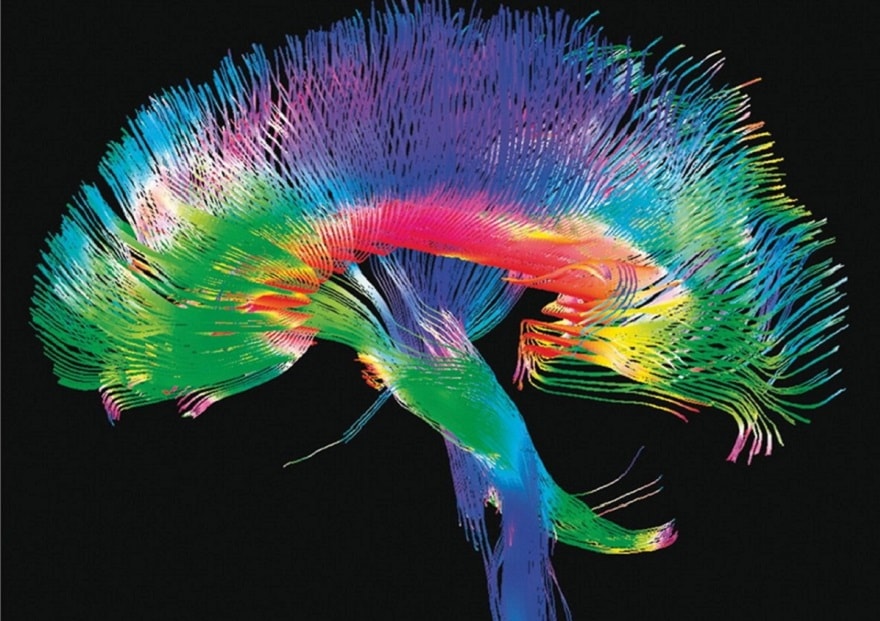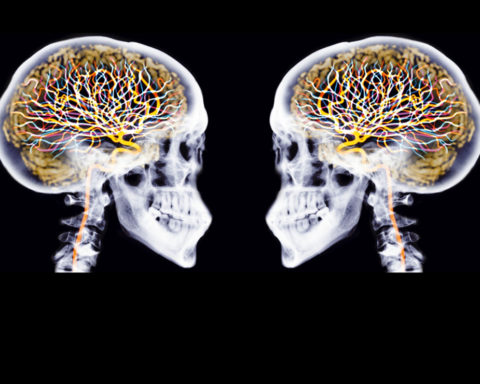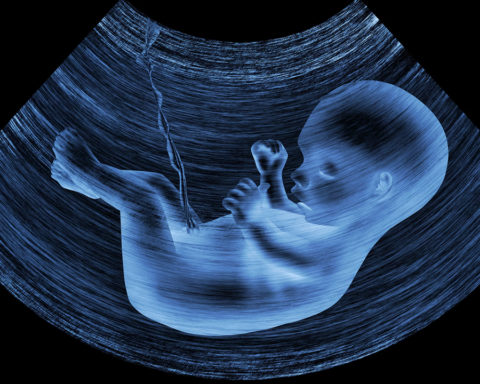The field of neuroscience has undergone a real revolution over the last thirty years thanks to the arrival of new imaging and investigation tools that have made it possible both to explore brain structures in great detail and to reveal in detail the electrical and biochemical functioning of the different areas of the brain.
At the same time, incredible advances in genome sequencing and mapping tools have also shed new light on the prodigious complexity of our brain and have led doctors and scientists to reconsider the origins and causes of the many disorders and pathologies that can alter the functioning of our brain.
C’ome weeks ago, a research team in psychiatry at CEA-Neurospin, together with the Mondor Institute for Biomedical Research (INSERM) and the Henri-Mondor AP-HP University Hospitals, showed that a genetic variant of the SNAP25 gene disrupts a prefronto-limbic network, which increases the risk of developing several pathologies, including schizophrenia, bipolar disorder and attention deficit disorder. (See Journal of Neuroscience).
Working both on brain tissue from deceased persons and on the analysis of the genes of two groups of patients (the first comprising 71 subjects, including 25 bipolar patients, and the second comprising 121 healthy subjects), these scientists were able to show that the variation of the SNAP25 gene modified the expression of an associated protein involved in the processing of information between brain regions at the origin of emotion regulation. Correlatively to this approach, the analysis of data from imaging tools shows that in these two groups, the mutation at risk corresponds, on the one hand, to a greater volume of the amygdala and, on the other hand, to an alteration in the connectivity of the prefronto-limbic area.
This study is very interesting because it confirms that this variation in the SNAP25 gene is a common risk factor for schizophrenia and bipolar disorder. These diseases, which affect approximately 1 % of the adult population, are disabling and difficult to manage because they result from an interplay of biological, genetic and environmental causes. This study, by showing that one and the same gene seems to be strongly involved in the appearance of distinct brain diseases, thus opens new avenues for fundamental research on all the underlying and common mechanisms at work in these pathologies.
In August 2013, another study carried out by Mark Weiser, head of the psychiatry department of the Sheba Medical Center in Israel, had, for his part, highlighted a genetic link between autism and schizophrenia. Through the study of large databases in Israel and Sweden, Dr. Weiser's team found that people with a sibling with schizophrenia are 12 times more likely to develop autism spectrum disorders (ASD) than those who do not have a sibling with schizophrenia.
To arrive at these illuminating conclusions, researchers purposely used three separate databases, one in Israel and two in Sweden, to determine the relationship between schizophrenia and autism. The Israeli database contained anonymous information on more than one million soldiers. Remarkably, this link between risk of schizophrenia and autism was found in all three databases, making the results of this study very robust.
Last September, based on an extensive analysis of genome data from 4,890 patients with Autism Spectrum Disorders (ASD), scientists at the University of Southern California (USC), led by neurobiologist Bruce Herring, discovered eight new mutations, concentrated in a single region of the same gene, the TRIO gene, that significantly increase the risk of Autism Spectrum Disorders (ASD) (See Nature). This important discovery, which has just been published in the prestigious journal Nature, confirms the key role of the TRIO gene, which controls the synthesis of a protein that plays a key role in the stability of connections between brain cells.
According to this work, the alterations observed in the production of this protein in the early stages of a child's brain development are likely to set off a chain reaction that will eventually disrupt the brain's connections, its "wiring plan" and, consequently, its ability to properly process and store information. The study also points out that the probability of these mutations occurring by chance is minute: about 1 in 1.8 billion .
Remarkably, the eight mutations discovered are all located in "GEF1 / DH1", a small region of the TRIO gene, which encodes a specific area of the Trio protein, which itself activates, in cascade, another protein, Rac1. Rac1 also plays a key role in the brain's connection networks.
This work has clearly shown that in the absence of these mutations, the Rac1 protein is correctly activated, resulting in the growth of actin filaments that allow brain connections. On the other hand, the presence of these mutations blocks the activation of the Rac1 protein, which disrupts the stability of the connections between different areas of the brain.
But these researchers made another very interesting observation: the TRIO gene has a very close homologue, the KALRN gene. These two genes belong to the same signalling pathway in brain cells. And it turns out that certain KALRN mutations are present in patients suffering from schizophrenia.
Another indication is that mutations in the KALRN gene disrupt this pathway during adolescence, which may explain why symptoms of schizophrenia appear at this time of life. This discovery therefore seems to support the hypothesis of a common genetic basis for autism and schizophrenia.
But while it is becoming increasingly clear that there are certain common underlying genetic bases linking the main psychiatric pathologies (Autism, Schizophrenia and bipolar disorders in particular), it also seems that there are certain common genetic mechanisms at work in several serious neurodegenerative diseases, such as Alzheimer's, Parkinson's and multiple sclerosis.
As early as 2002, a study carried out by American population genetics researchers and directed by Professor Margaret Pericak-Vance, had shown, by analysing and comparing the genomes of more than 500 families of Alzheimer's or Parkinson's patients, that there was the same specific region on chromosome 10 that seemed to be involved in the risk of the appearance of these two pathologies, which are nevertheless distinct.
It is also known that, clinically, many patients with Alzheimer's disease develop the movement disorders seen in Parkinson's disease; symmetrically, Parkinson's patients sometimes show signs of dementia characteristic of Alzheimer's disease. Other work has also shown that an enzyme deficiency in the same group of nerve cells (Meynert's basal nucleus) is involved in both pathologies and protein clusters called Lewy bodies, characteristic of Parkinson's disease, are found in the brains of some Alzheimer's patients. Finally, it should be pointed out that a comparable inflammatory process concerning oxidative metabolism is at work in both diseases.
In 2010, a team of French researchers from the Centre for Macromolecular Biochemistry Research (CNRS/Universities of Montpellier 1 and 2) and the National Institute of Health (USA) showed that certain proteins playing a key role in several neurodegenerative diseases, such as Parkinson's, Alzheimer's and Huntington's syndrome, show strong similarities.
In 2013, researchers at Stanford University in the United States, led by Alexander Stephan, showed, based on the analysis of brain tissue from deceased patients, that an excess concentration of the protein C1q at synapses led to the destruction of brain immune cells. According to these researchers, the development of molecules that target and block the C1q protein could lead to major therapeutic advances in many neurodegenerative diseases, such as multiple sclerosis, Parkinson's disease and Alzheimer's disease.
In September 2016, another very interesting study by researchers at the Salk Institute in California showed that increasing the levels of the protein Neutulin-1 in the brain could reduce the symptoms of Alzheimer's disease and improve memory. This research has shown that Neurégulin-1 promotes the development of the amyloid plaques characteristic of Alzheimer's disease.
More broadly, it seems that this neurregulin-1 protein plays a major role in the proper functioning of many brain functions. Researchers at Georgia Regents University, for example, have shown that some patients with schizophrenia have high levels of this protein. A mutation in the neuregulin-1 gene has also been identified in families frequently affected by schizophrenia and certain forms of Alzheimer's disease. It is therefore possible that this protein is strongly implicated in several neurodegenerative diseases.
This recent research shows in a consistent and convergent manner that there are very likely to be some common biological and genetic mechanisms that, in synergy with other environmental factors, promote the onset of many neurodegenerative diseases but also of serious psychiatric disorders.
The importance of this research is better understood when we know that the number of people suffering from psychiatric pathologies in France has been estimated at 12 million in 2012, i.e. almost one French person out of 5 (See Elsevier). As for the main neurological and neurodegenerative diseases (Alzheimer's, Epilepsy, Parkinson's and Multiple Sclerosis), they affect approximately 1.7 million people in France).
The forthcoming arrival of powerful computer tools for artificial intelligence and even faster genome sequencing techniques should make it possible to confirm this hypothesis of a common biological and genetic basis for all these brain pathologies and should also accelerate the implementation of personalized prevention strategies and new therapeutic solutions that offer hope.
René TRÉGOUËT, Honorary Senator - Founder of the Senate Foresight Group
Edito published in RT Flash 17/11/2017












